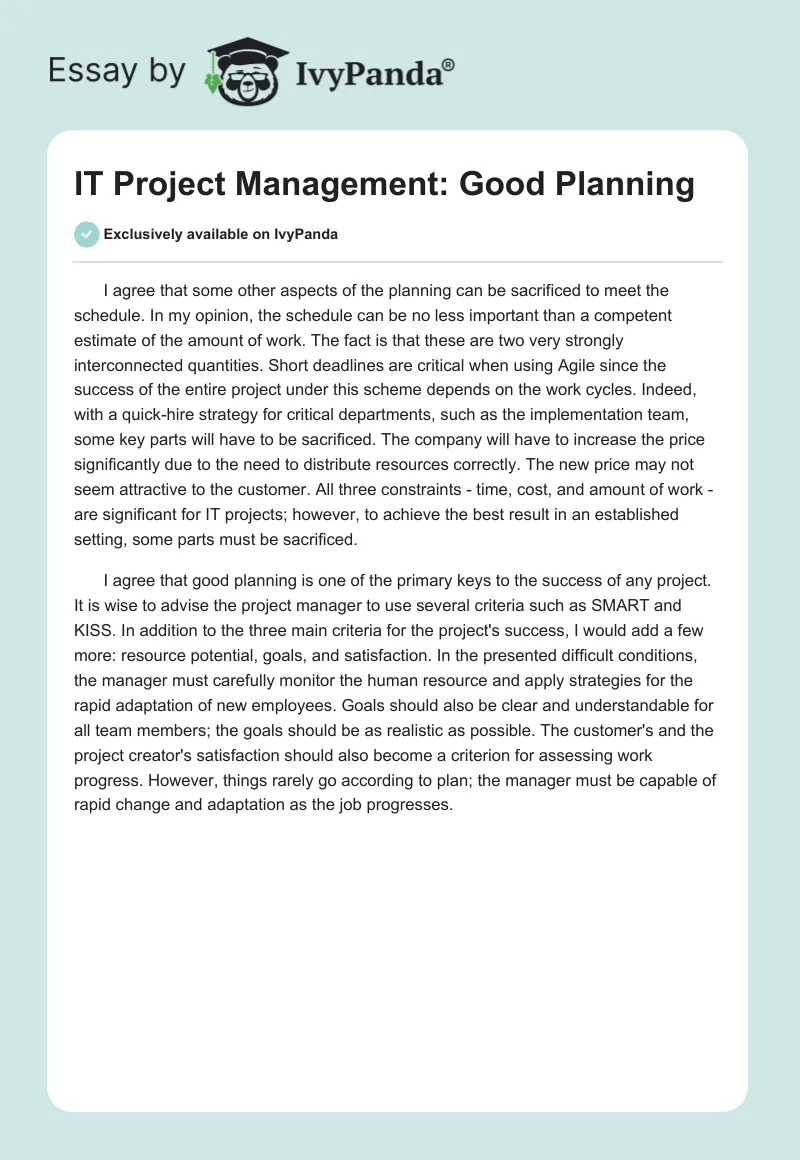I agree that some other aspects of the planning can be sacrificed to meet the schedule. In my opinion, the schedule can be no less important than a competent estimate of the amount of work. The fact is that these are two very strongly interconnected quantities. Short deadlines are critical when using Agile since the success of the entire project under this scheme depends on the work cycles. Indeed, with a quick-hire strategy for critical departments, such as the implementation team, some key parts will have to be sacrificed. The company will have to increase the price significantly due to the need to distribute resources correctly. The new price may not seem attractive to the customer. All three constraints – time, cost, and amount of work – are significant for IT projects; however, to achieve the best result in an established setting, some parts must be sacrificed.
I agree that good planning is one of the primary keys to the success of any project. It is wise to advise the project manager to use several criteria such as SMART and KISS. In addition to the three main criteria for the project’s success, I would add a few more: resource potential, goals, and satisfaction. In the presented difficult conditions, the manager must carefully monitor the human resource and apply strategies for the rapid adaptation of new employees. Goals should also be clear and understandable for all team members; the goals should be as realistic as possible. The customer’s and the project creator’s satisfaction should also become a criterion for assessing work progress. However, things rarely go according to plan; the manager must be capable of rapid change and adaptation as the job progresses.

